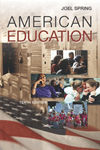 |
1 |  | 
In a factional community |
|  | A) | The survival of the superintendent depends upon his or her ability to function as a political strategist balancing concerns of each community faction. |
|  | B) | The local elite controls access to membership on the school board and, consequently, controls school board policies. |
|  | C) | Competition among a variety of groups results in constantly shifting coalitions on the school board. |
|  | D) | The superintendent has most of the power over school issues because the community is ideologically homogenous and without a sense of purpose. |
 |
 |
2 |  | 
The traditional school district organization consists of community members electing representatives to the school board, which then appoints the superintendent of schools, who functions as the chief executive officer of the school district. |
|  | A) | True |
|  | B) | False |
 |
 |
3 |  | 
Which statement is true? |
|  | A) | The Home School Defense League announced in 2000 that home-schooled students scored higher on the ACT than their traditionally educated peers. |
|  | B) | Home schooling has no impact outside the United States. |
|  | C) | Home schooling is congruent with the traditional arguments for public schooling. |
|  | D) | Since parents have absolute control over their child's education, they are competent to teach their child at home. |
 |
 |
4 |  | 
Which of the following is not a community power structure identified by McCarty and Ramsey: |
|  | A) | Dominated |
|  | B) | Factional |
|  | C) | Fluid |
|  | D) | Inert |
 |
 |
5 |  | 
Site-based management is an attempt to relocate educational bureaucrats from the central office into the school so that they can keep a better watch over the day-to-day operations of the school. |
|  | A) | True |
|  | B) | False |
 |
 |
6 |  | 
Charter schools |
|  | A) | Were required to be uniform across the United States by the year 2000 because of the passage of the Uniform Educational Accountability in Charter Schools Act passed by Congress in 1998. |
|  | B) | Are seen as a way for educators to obtain freedom and autonomy from bureaucratic controls. |
|  | C) | Are granted an automatic waiver from the state education codes in all states. |
|  | D) | Are completely free from the control of local school boards. |
 |
 |
7 |  | 
Currently, the debate over who should control education has ranged from |
|  | A) | The business community. |
|  | B) | Religious organizations. |
|  | C) | Minority parents. |
|  | D) | All of the above. |
 |
 |
8 |  | 
Which of the following is not a criticism of educational bureaucracies? |
|  | A) | Educational bureaucracies are self-serving and resistant to change and improvement. |
|  | B) | Since bureaucrats are public servants, they are dedicated to serving the interests of the public and the child. |
|  | C) | The major goal of educational bureaucracies is to expand its membership, protect its members, and gain increasing amounts of revenue. |
|  | D) | All of the above. |
 |
 |
9 |  | 
Traditional school district organization is criticized because |
|  | A) | Most school boards operate on the principle of trustee representation. |
|  | B) | It lacks responsiveness to parents' desires. |
|  | C) | The central office and superintendent are bureaucratic barriers to any real change in the school district. |
|  | D) | All of the above. |
 |
 |
10 |  | 
The State of Charter Schools, 2000, reported the following characteristic of charter schools |
|  | A) | They enroll a higher percentage of students of color. |
|  | B) | They use traditional grade configurations. |
|  | C) | They are primarily pre-existing private schools that have converted in order to obtain funding from the state. |
|  | D) | They are small in size. |
|  | E) | All of the above. |
 |
 |
11 |  | 
Since most people agree that parents should be allowed to choose which public school their children attend, most of the school choice debate since the 1960s has focused on voucher or public-private choice. |
|  | A) | True |
|  | B) | False |
 |
 |
12 |  | 
Critics object to the growth of for-profit corporations managing schools because |
|  | A) | It actually reduces the diversity of teaching and learning techniques. |
|  | B) | It reduces the amount of control the community and local school boards have over education. |
|  | C) | It allows commercialization and advertising to enter into the school. |
|  | D) | All of the above |
 |
 |
13 |  | 
Since most states have not passed legislation impacting home schooling, it provides a way for parents to take charge of their children's education and to dodge the control of school boards and unresponsive school bureaucracies. |
|  | A) | True |
|  | B) | False |
 |



 2002 McGraw-Hill Higher Education
2002 McGraw-Hill Higher Education